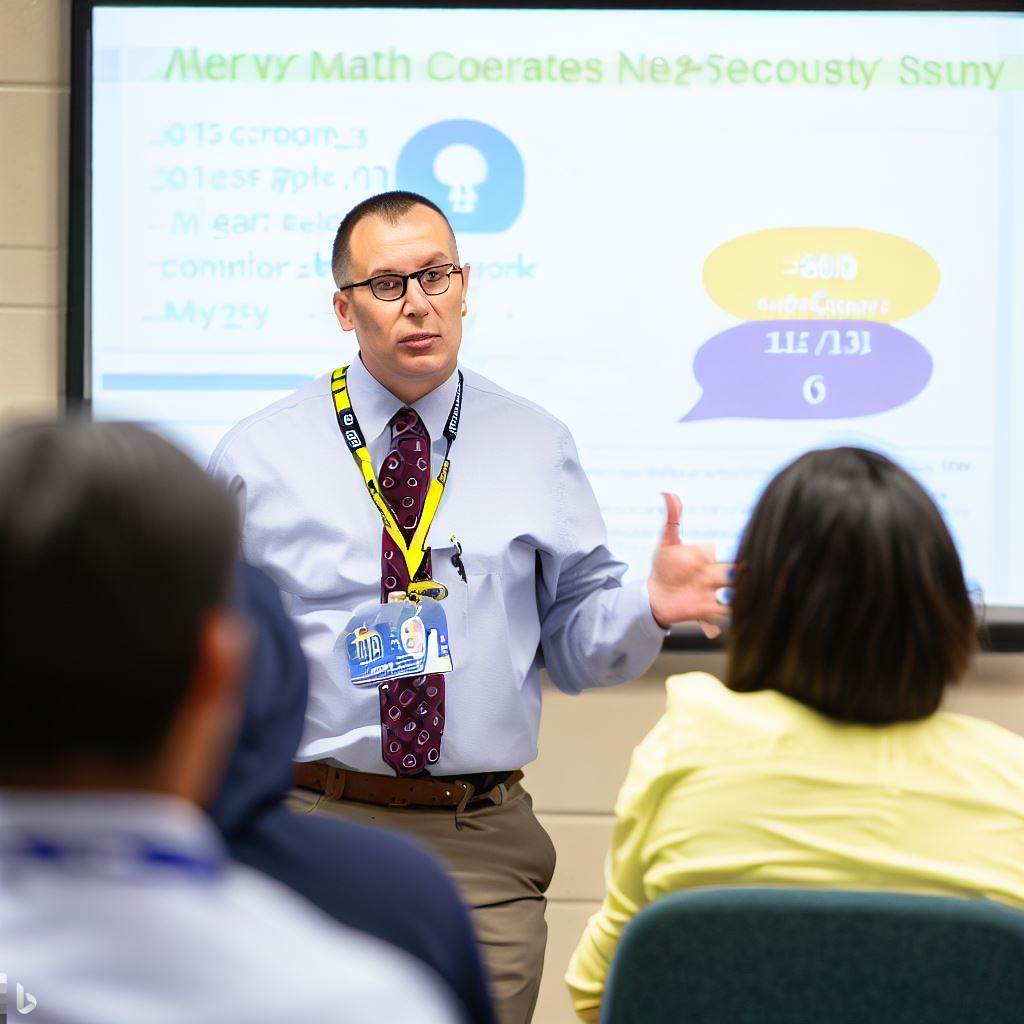Introduction
A. Explanation of CodeMonkey
CodeMonkey is an interactive platform designed to teach children coding through game-based learning.
B. Importance of Coding in School Districts
- Digital Era Demands: In today’s digital age, coding is an indispensable skill, with applications in various fields.
- Problem Solving: Coding fosters critical thinking and problem-solving abilities, preparing students for real-world challenges.
- Tech Career Opportunities: Coding opens doors to lucrative tech careers, addressing the demand for skilled professionals.
- Digital Literacy: It enhances digital literacy, equipping students with skills essential for modern life.
- Innovation: Coding cultivates creativity and innovation, fostering the next generation of thinkers and inventors.
- Cross-Curricular Relevance: Coding is not limited to computer science; it has relevance across subjects.
Understanding CodeMonkey’s role and the significance of coding in school districts sets the stage for this exploration.
Read: Mastering Algorithms: Key Concepts Every Coder Should Know
Adoption of CodeMonkey in School Districts
A. Overview of schools using CodeMonkey
Many schools across various districts are adopting CodeMonkey as a crucial tool for teaching coding.
B. Benefits of using CodeMonkey
1. Enhancing problem-solving skills
CodeMonkey aids in developing students’ ability to analyze and solve problems efficiently.
2. Fostering creativity and critical thinking
By engaging in coding challenges, students enhance their creative and critical thinking abilities.
3. Developing logical reasoning abilities
CodeMonkey helps students understand and apply logical reasoning principles in problem-solving scenarios.
4. Promoting collaboration and teamwork
Through multiplayer game modes, CodeMonkey encourages students to collaborate and work together effectively.
C. Examples of successful implementation
1. Grady Elementary School, Missouri
Teachers at Grady Elementary School integrated CodeMonkey into their curriculum, resulting in improved problem-solving skills among students.
2. Johnson Middle School, California
With the help of CodeMonkey, Johnson Middle School witnessed a significant increase in students’ logical reasoning abilities and collaboration skills.
3. Palmerton High School, Pennsylvania
By incorporating CodeMonkey in the classroom, Palmerton High School students demonstrated enhanced creativity and critical thinking skills.
The adoption of CodeMonkey in school districts has been a game-changer in computer science education.
With its user-friendly interface and interactive coding challenges, CodeMonkey has become an increasingly popular tool in classrooms across the country.
One of the key advantages of using CodeMonkey is its ability to enhance problem-solving skills.
Through its progressively difficult levels and real-life coding scenarios, students are exposed to various challenges that require them to analyze problems and find effective solutions.
Tech Consulting Tailored to Your Coding Journey
Get expert guidance in coding with a personalized consultation. Receive unique, actionable insights delivered in 1-3 business days.
Get StartedThis not only improves their problem-solving abilities but also helps them develop a structured approach to tackling complex issues.
Furthermore, CodeMonkey fosters creativity and critical thinking among students.
By encouraging them to explore different coding solutions and experiment with code, students can think outside the box and come up with innovative solutions.
This creativity is crucial in nurturing the next generation of innovators and problem solvers.
A major benefit of CodeMonkey is its focus on developing logical reasoning abilities.
Through its step-by-step coding challenges, students learn to think logically and develop algorithms to solve problems.
This logical reasoning skill is essential not only in coding but also in various aspects of life, such as decision-making and strategic planning.
CodeMonkey also promotes collaboration and teamwork through its multiplayer game modes. Students can work together, sharing ideas and solving challenges as a team.
This collaborative approach not only improves their communication and teamwork skills but also provides a fun and engaging learning environment.
Successful implementations
Several schools have successfully implemented CodeMonkey into their curriculum with impressive results.
Grady Elementary School in Missouri, for example, integrated CodeMonkey into their computer science lessons, leading to significant improvements in students’ problem-solving skills.
Similarly, Johnson Middle School in California saw a remarkable increase in logical reasoning abilities and collaboration skills after implementing CodeMonkey.
Palmerton High School in Pennsylvania observed enhanced creativity and critical thinking skills among their students through the use of CodeMonkey.
All in all, the adoption of CodeMonkey in school districts has proved to be highly effective in enhancing problem-solving skills, fostering creativity, developing logical reasoning abilities, and promoting collaboration and teamwork.
Build Your Vision, Perfectly Tailored
Get a custom-built website or application that matches your vision and needs. Stand out from the crowd with a solution designed just for you—professional, scalable, and seamless.
Get StartedThe success stories from various schools demonstrate the positive impact this coding platform has on students’ overall learning experience.
With its engaging interface and interactive challenges, CodeMonkey holds immense potential in equipping students with essential 21st-century skills.
Read: The Future of Coding: Trends to Watch Out for in 2024
Challenges in Implementing CodeMonkey
Implementing CodeMonkey in school districts comes with its fair share of challenges.
The successful integration of this coding platform requires addressing key obstacles that hinder its effective implementation.
In this section, we will discuss the challenges schools face when introducing CodeMonkey to their curriculum and explore possible solutions to overcome them.
A. Lack of resources
One major hurdle schools encounter is a lack of resources. Insufficient funding for licenses and equipment impedes the accessibility of CodeMonkey for students.
Without proper financial support, schools struggle to provide their students with the necessary tools and software licenses.
Additionally, limited access to computers or devices further restricts the utilization of CodeMonkey, hindering its benefits from reaching all students.
To overcome this challenge, school districts need to prioritize allocating sufficient funds to invest in CodeMonkey licenses and equipment.
Securing funding from external sources or seeking grants specifically aimed at educational technology can help bridge the financial gap.
Moreover, schools should explore partnerships with local businesses or organizations that can provide access to computers or devices for students during coding lessons.
B. Teacher training and support
Another significant challenge is the lack of teacher training and support.
Educators may struggle with incorporating coding lessons into their existing teaching practices due to a limited understanding of coding concepts or pedagogical methods.
Optimize Your Profile, Get Noticed
Make your resume and LinkedIn stand out to employers with a profile that highlights your technical skills and project experience. Elevate your career with a polished and professional presence.
Get NoticedWithout proper training, teachers may feel unprepared to guide students effectively, reducing the overall success of CodeMonkey implementation.
To address this challenge, schools must prioritize professional development programs focused on coding education.
Offering workshops, seminars, or online courses can equip teachers with the necessary skills and knowledge to confidently teach coding using platforms like CodeMonkey.
Collaborating with coding experts or hiring specialized staff who can provide ongoing support to teachers can also bolster their confidence in teaching coding effectively.
C. Curriculum integration
Integrating CodeMonkey into the existing curriculum can pose several challenges.
One primary difficulty is incorporating coding into subjects such as mathematics or science, where teachers may struggle to find appropriate connections between the curriculum content and coding concepts.
Additionally, aligning CodeMonkey with academic standards can be a complex task, requiring careful collaboration between coding educators and subject matter experts.
To tackle this challenge, schools should encourage interdisciplinary collaboration between coding educators and subject teachers.
By working together, educators can identify areas within the curriculum where coding can be seamlessly integrated.
Developing cross-curricular projects that combine coding with other subjects can create meaningful learning experiences for students.
Moreover, creating specific academic standards or benchmarks that include coding skills will facilitate better alignment of CodeMonkey with the overall curriculum.
Essentially, implementing CodeMonkey in school districts may encounter challenges related to limited resources, teacher training and support, and curriculum integration.
However, by addressing these challenges through adequate funding, comprehensive teacher training, and interdisciplinary collaboration, schools can overcome these obstacles and ensure the successful integration of CodeMonkey into their curriculum.
By doing so, schools can empower their students with essential coding skills, preparing them for a future driven by technology.
Read: What Parents Think About CodeMonkey: Reviews & Feedback

Find Out More: Using CodeIgniter’s Migration for Database Versioning
Case Studies: Success Stories from School Districts
Success stories have emerged from various school districts across the United States, where the implementation of the CodeMonkey program has proven to be a valuable asset in preparing students for the digital age.
In this section, we will explore three specific case studies that highlight the success and challenges faced by school districts in integrating CodeMonkey into their curricula.
A. New York City Department of Education: Overcoming resource challenges
One significant challenge that the New York City Department of Education faced was the limited availability of resources.
However, they managed to secure the necessary investment from the community, demonstrating the importance of community engagement in supporting educational initiatives.
Additionally, the district partnered with local businesses, allowing them to tap into additional resources and expertise to enhance the implementation of the CodeMonkey program.
B. Los Angeles Unified School District: Effective teacher training models
The Los Angeles Unified School District recognized the significance of providing teachers with the necessary training and support to effectively implement CodeMonkey in their classrooms.
The district offers ongoing professional development opportunities that empower educators with the skills and knowledge required to teach coding effectively.
Furthermore, they have implemented a peer mentoring system, enabling teachers to learn from one another and share best practices for integrating CodeMonkey into their teaching.
C. Chicago Public Schools: Seamless integration with curriculum
One of the primary challenges faced by the Chicago Public Schools was ensuring a seamless integration of CodeMonkey into the existing curriculum.
To address this, the district actively collaborates with subject-area teachers to develop lesson plans and activities that incorporate coding.
By integrating coding into various subjects, such as math, science, and language arts, the Chicago Public Schools have successfully made coding an integral part of their students’ learning experience.
Basically, these case studies highlight the success stories and effective strategies employed by school districts in implementing the CodeMonkey program.
Overcoming resource challenges, providing ongoing professional development, and seamlessly integrating coding into the curriculum have been key factors in the success of these districts.
These examples serve as inspiration and guidance for other school districts looking to embark on their own journey towards preparing students for the digital future.
Read: How CodeMonkey Can Help Your Child’s Career in Tech
Future Outlook and Recommendations
Expanding access to CodeMonkey transforms students for the digital era, imparting valuable future-ready skills.
Here’s how:
- Empowering Students: Coding fosters creativity, innovation, and problem-solving abilities.
- Partnerships for Support: Collaborations with Code.org and nonprofits provide resources and teacher training.
- Grants for Implementation: Financial support aids effective integration of CodeMonkey into school districts.
- Teacher Professional Development: Equipping educators with coding skills is crucial for successful integration.
- Cross-Curricular Integration: Incorporating coding into math and science enhances understanding and real-world applications.
- Advocacy for Coding: Raising awareness and advocating for coding education are essential for policy prioritization.
Expanding CodeMonkey’s presence in school districts hinges on concerted efforts from educators, policymakers, and communities.
It promises an equitable, innovative education system, preparing students for the 21st century’s demands.
Conclusion
Recap of the benefits and challenges of using CodeMonkey in school districts
Using CodeMonkey in school districts offers numerous benefits such as improved problem-solving skills, enhanced critical thinking abilities, and increased engagement among students.
However, it also presents challenges such as the need for teacher training and access to proper technology.
Encouragement for schools to embrace coding education
In light of the positive outcomes associated with implementing CodeMonkey, it is crucial for schools to embrace coding education.
By doing so, they empower students with invaluable skills for the digital age.
Call to action for students, educators, and policymakers
To fully leverage the potential of CodeMonkey and similar coding platforms, students should actively participate and explore the opportunities presented.
Educators should advocate for coding programs and seek professional development opportunities.
Policymakers must prioritize coding education and provide necessary resources and support to make it accessible to all students.
By recognizing the benefits and challenges, encouraging schools to adopt coding education, and rallying students, educators, and policymakers, we can foster a generation of digitally proficient and innovative individuals prepared for the future.
Let’s embrace the power of coding and unlock endless possibilities!




